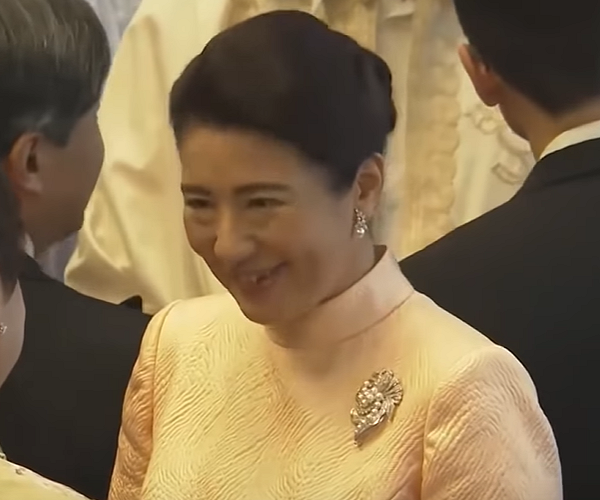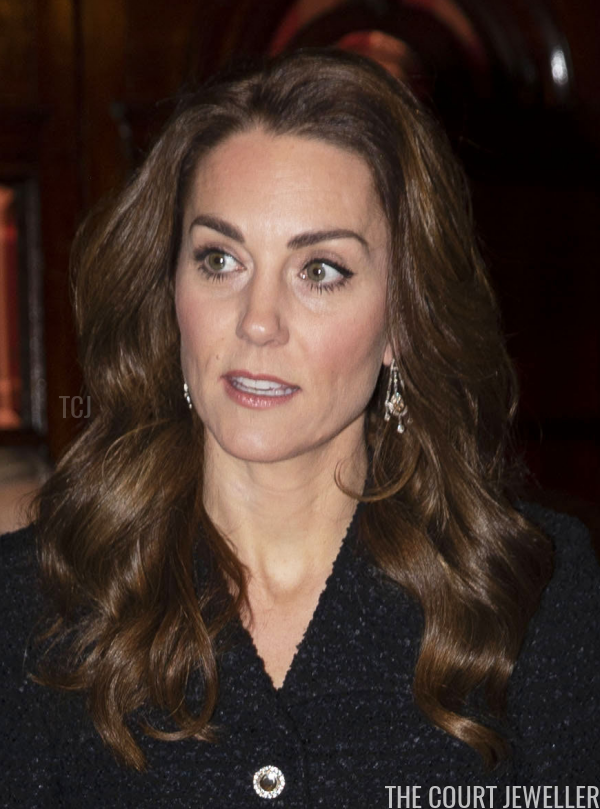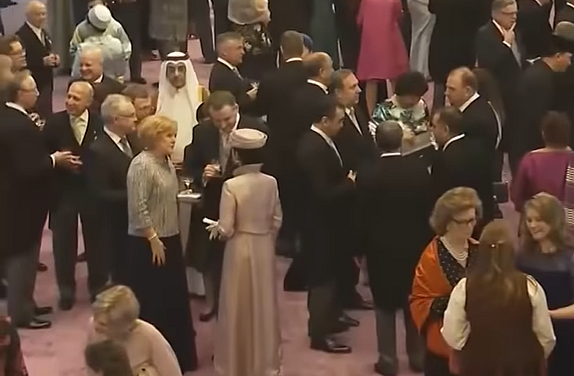 |
| Christie’s |
As we celebrate the month of the aquamarine, today we’ve got a look at a rather mysterious royal tiara that recently resurfaced in Tokyo: the Koch Aquamarine Kokoshnik.

This striking diamond and aquamarine tiara was originally part of the Russian imperial jewelry collection. There don’t appear to be any photographs of any of the Romanovs actually wearing the tiara, and the provenance information we have on the piece is a little bit murky. For years, it was frequently speculated that the tiara dated to around 1900 and was perhaps made by Fabergé. (As the firm often supplied jewelry to the Romanovs, it wasn’t an unreasonable possibility.)
 |
| Albion Art |
But more recently, it’s been revealed that the tiara was actually made in Germany around 1910. The makers were the fantastic and innovative jewelers at Koch. They’re responsible for some of the most balanced and classic royal kokoshniks, including the Prussian Tiara and the Prussian Meander Kokoshnik, so it makes a great deal of sense that they’ve been revealed as the makers of this kokoshnik as well. The tiara features diamonds and rectangular aquamarines, making brilliant use of the natural shape of the gem, set in platinum and gold. You’ll sometimes see the tiara depicted beside a coordinating pair of earrings and a necklace; these were later creations, not made by Koch and not part of any original parure.
 |
| Alexandra Feodorovna photographed in the Alexander Palace at Tsarskoe Selo, ca. 1909 (Wikimedia Commons) |
It’s long been said that the aquamarine kokoshnik came from the personal jewelry collection of Alexandra Feodorovna, the last Empress of Russia. She loved aquamarines, and her husband, Nicholas II, loved giving them to her. One of his engagement presents to her, after all, was a fantastic aquamarine brooch. But, as I said, we have no images of Alexandra wearing the tiara, and we don’t know exactly what would have happened to the tiara after the family was toppled from the throne. While many of the former imperial jewels were meticulously catalogued and photographed by the Soviets in preparation for public auction, the aquamarine tiara was not among them.
 |
| Christie’s |
There are plenty of rumors, though, about where the tiara went next. Some have suggested that Wartski, a London jeweler that specializes in Russian jewels, acquired the aquamarine tiara in Russia about two years after the Romanovs were murdered. Others have claimed that representatives from the Soviet government brought the tiara to Paris in a suitcase and sold it there. We know for certain, though, that the tiara (or a very similar piece) was auctioned by Sotheby’s in Switzerland in the 1980s. It was subsequently sold privately by Christie’s in 2014. And in December 2017, Christie’s again offered the tiara (or a very similar piece) in a special private tiara sale in London, calling it simply “an antique aquamarine and diamond tiara,” and not mentioning any imperial connection at all.
 |
| An official portrait of Queen Carolyn of Ladonia wearing the tiara — or a replica? |
Over time, the tiara (or, again, one very much like it) has popped up briefly here and there in public. Astrid Bernadotte, a granddaughter of Folke and Estelle Bernadotte, wore the tiara (or a very similar one) during her wedding reception in 2017. And — rather bizarrely — the tiara (or, quite likely, a close replica) has appeared on the head of a woman called “Queen Carolyn of Ladonia.”
Ladonia is a micronation: an entity whose members claim to belong to an independent sovereign state, but which is not officially recognized by world governments or institutions. (A “micronation” is different from a “microstate” — like Liechtenstein or Monaco, for example. Those small states are recognized as sovereign territories by the rest of the world.) Physically, Ladonia is a tiny bit of land within a Swedish nature preserve that surrounds sculptures made by Lars Vilks; he declared the area around the sculptures a sovereign nation in 1996 during a dispute with the local council. Ladonia has citizens but no residents, including said Queen Carolyn, who was born in America and still lives there with her husband and children. Anyway — there’s the tiara, or a replica, on her in the portrait above.
 |
| Albion Art |
Although the tiara has been in the shadows for quite a long time, we recently learned that it has found a permanent new home. It has been acquired by the Japanese-based Albion Art Institute, whose president, Kazumi Arikawa, is the steward of one of the biggest privately-owned collection of historic jewels in the world. Arikawa’s eventual goal is to construct a major museum to house these pieces in Kyoto, but for now, the institute often lends its tiaras and jewels to exhibitions around the globe. Perhaps we’ll see the aquamarine kokoshnik on public display soon?
































